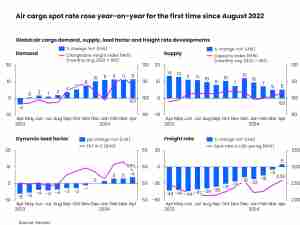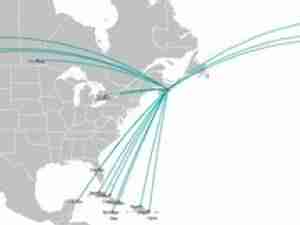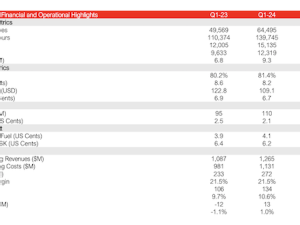China is struggling to contain rising public anger over its response to a spreading coronavirus even as it took unprecedented steps to slow the outbreak, restricting travel for 40 million people on the eve of Lunar New Year.
- LATEST: Death toll jumps to 25 from 18; one victim age 36
- Over 10 Chinese cities curb travel
- Cases emerge in 32 of China’s 34 provinces
- WHO opts not to declare global emergency yet
The turmoil comes as the virus is proving more difficult to contain than other pandemics, stymieing efforts to track infected patients before they travel. While the death toll continues to rise—and now includes someone as young as 36—some infected patients aren’t showing a fever, a symptom governments around the world have been using to screen for the pathogen.

The pressure is rising on China as it tries to come to grips with a disease that some fear could rival SARS, which 17 years ago claimed almost 800 lives. While global experts have mostly praised efforts to contain the virus, Chinese citizens are increasingly critical and anxious as travel restrictions grow to encompass a population bigger than Australia.
Beyond the restricted area at the epicenter of the outbreak, major closures took place across the country amid the health fears. Public events to mark the new year were canceled, Shanghai Disneyland announced that it was closing indefinitely, and cinema chains canceled movie screenings. The halt to activity comes during what is usually a peak period for spending, putting China’s economic stabilization at risk.
“This is unprecedented in China, and maybe even in the history of modern health,” said Yanzhong Huang, director of the center for Global Health Studies at Seton Hall University in New Jersey, of the widening travel restrictions. “It’s a tremendous legal, institutional, not to mention logistical challenge.”
The death toll rose to 25, even as the World Health Organization stopped short of calling the virus a global health emergency. The number of confirmed cases in mainland China rose to more than 800 as of Jan. 23, the National Health Commission said in a statement. At least one patient is as young as 10 years old.
Patients with the infection have been found in countries across Asia, including Singapore, Japan and South Korea. Outside the region, the U.S. has reported one case.
In China, what should have been a day of celebration and reunion was colored by growing panic and anger. Local media issued sharp criticisms of the slow response from officials in Hubei province, whose capital city is Wuhan, the center of the outbreak. Rumors have spread rapidly on social media, encompassing everything from a shortage of hospital beds to the spraying of disinfectant from planes.
Chinese officials led by President Xi Jinping pledged “all-out” efforts to contain the outbreak this week. The government on Friday vowed to punish officials who delay virus information, with the State Council setting up an online platform to allow the public to report disclosure problems.
For now, China appears willing to let local officials take the brunt of public anger. The country’s powerful internet censors have allowed criticism to fall heaviest on lower-level officials, such as Wuhan Mayor Zhou Xianwang, who has faced calls to resign after he acknowledged on Tuesday that the city “didn’t have sufficient warnings” about the risk.
China’s state-controlled media have also weighed in. A commentary posted by the Communist Party’s People’s Daily newspaper on Tuesday said Wuhan’s statements had “caused panic” while its affiliated Global Times tabloid said the city’s “failed” to contain the virus early on.
The ruling Communist Party is anxious to avoid a repeat of SARS, during which it was criticized for initially covering up the scale of the problem. Back then, China fired more than 100 officials, including the health minister and the mayor of Beijing, amid allegations that local governments suppressed information about the disease.
Outside of China, the feedback has been more positive. Germany’s health minister said Friday that China is doing a better job and the world community is more prepared than during SARS.
“There’s a big difference to SARS. We have a much more transparent China,” Jens Spahn told Bloomberg TV on the sidelines of the World Economic Forum in Davos. “The action of China is much more effective in the first days already.”
At the same time, questions are being raised about China’s ability to effectively screen for the disease. Details of those who have died after contracting the virus, which now includes someone as young as 36 years old, showed that several didn’t have a fever, potentially complicating global efforts to check for infected travelers as they arrive at airports and other travel hubs.
The lack of fever as a symptom means that temperature screening—the main method now being deployed at airports and transport hubs to control the outbreak—would fail to pick up on at least some cases.
“The whole airport screening exercise is to simply give people comfort that there is some government action to protect the public,” said Ramanan Laxminarayan, director of the Center for Disease Dynamics, Economics & Policy in Washington, D.C. “It has no real public health utility in the case of coronaviruses. What really matters is surveillance, infection control and isolation.”
While the virus is moving from human to human, a situation that worries public health officials, it appears that close exposure is critical. Most cases have moved from patients to their close family members or to health-care workers who were caring for them.
Most of those who have died had other health conditions, including diabetes and heart disease, that weakened their immune systems. Symptoms include fever, cough or chest tightness, and difficulty breathing.
The WHO said in a statement after its briefing that “amplification”—presumably a super spreader event in which an infected person passes on the disease to many others—occurred at one health facility. It also said a single patient on average can ignite as many as 2.5 additional infections.
Furthermore, WHO has detected transmission from patient to patient across a chain of as many as four people. Such a pattern explains the case of a 56-year-old in Tianjin, who was confirmed to have the coronavirus despite having no work history in Wuhan.
Public health experts gathered by the United Nations agency to review the situation were split over whether they should recommend declaring a public health crisis of international concern and instead opted to continue monitoring the outbreak. Tedros Adhanom Ghebreyesus, the WHO’s director-general, said he would reconvene the committee within 10 days, or at a moment’s notice should the situation take a turn for the worse.
“Make no mistake, this is an emergency in China, but it has not yet become a global health emergency,” Tedros said at a briefing in Geneva Thursday. “It may yet become one.”
Over ten cities in Hubei province, including Wuhan, have restricted the use of public transportation to prevent the spread of the novel coronavirus, according to the People’s Daily. The other cities include Huanggang, Xianning, Qianjiang, Xiantao, Ezhou, Chibi, Huangshi, Enshi and Zhijiang.










